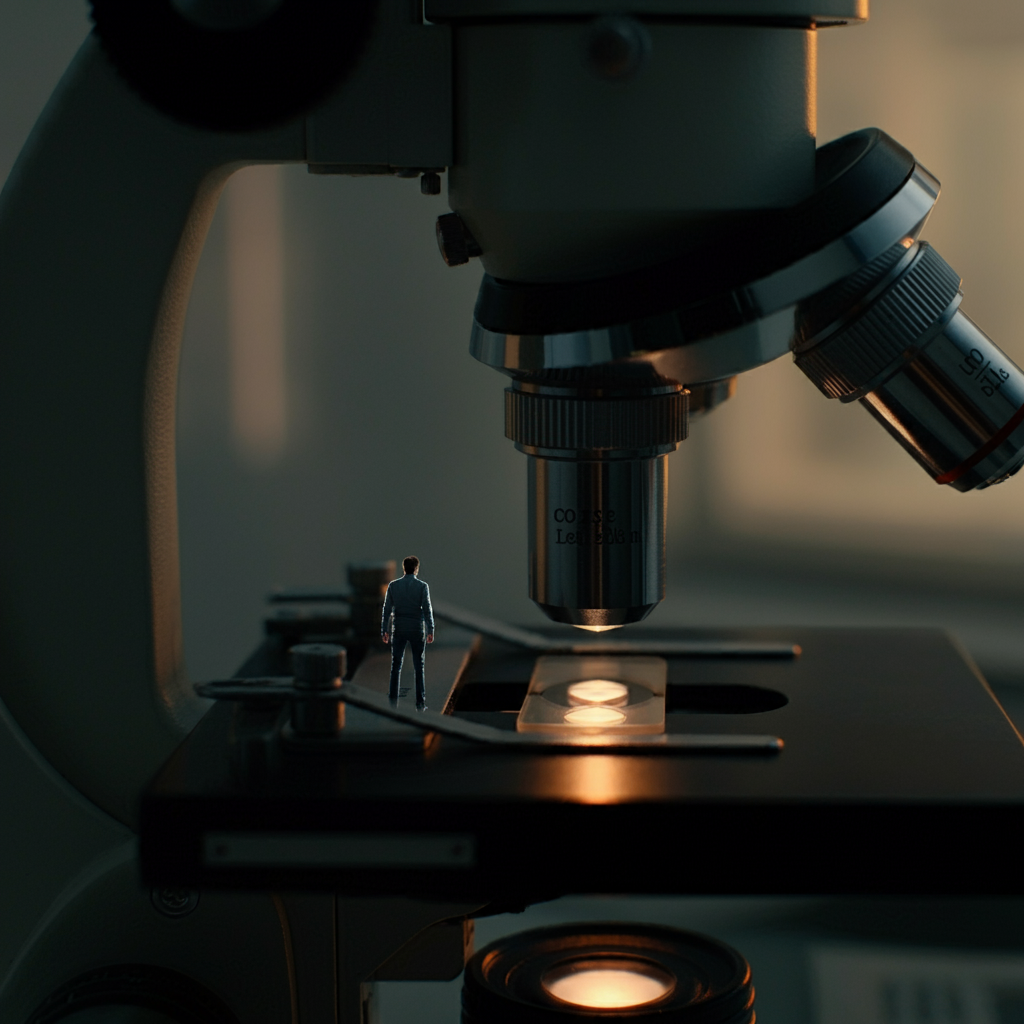Blog
Micro Mysteries: What Sci-Fi Gets Right About the Microverse

Introduction
Since the invention of microscopes in the 17th century, scientists have peered into the micro-worlds hidden within cells, organisms, and even atoms. Science fiction has taken these microscopic worlds to imaginative extremes, presenting them as mysterious realms full of adventure and discovery.
In this blog, we’ll explore how sci-fi stories depict the “microverse”—the tiny worlds inside our own—and compare those depictions to current scientific understanding. We’ll look at notable examples from films, books, and anime, and then see how much of this is possible (or likely) based on what we know about the microscopic world today.
The “microverse” taps into something fundamental in human nature: curiosity about the unknown. Sci-fi uses this curiosity, combining it with the thrill of shrinking down to explore fantastical worlds within. Yet, real-world science can sometimes offer even more captivating mysteries. We may not encounter tiny societies or entire civilizations in cells or particles, but the cellular landscapes we can see under a microscope are still thrilling. As we’ll discover, the exploration doesn’t end at microscopes; with drones, we can observe hidden natural worlds and gain perspectives on macro and micro levels.

The Microverse in Science Fiction
A Historical Perspective on the Microverse in Sci-Fi
From early speculative literature to modern movies, the microverse has served as an exciting frontier for imagination. Sci-fi’s fascination with miniaturization goes back to the early 20th century, with short stories and novels imagining characters shrinking and venturing into hidden worlds. One of the earliest examples is the 1936 short story He Who Shrank by Henry Hasse, where a scientist explores ever-smaller worlds within atoms. This concept, revolutionary at the time, inspired many future explorations of microscopic realms.
Popular Sci-Fi Examples of the Microverse

Ant-Man and the Quantum Realm
Marvel’s Ant-Man character leverages Pym Particles, allowing him to shrink to the atomic level. Ant-Man’s journey to the “quantum realm” is a fantastic take on the microverse concept. The visual representation of the quantum realm includes swirling particles, strange molecular landscapes, and glimpses of other worlds—all nods to quantum mechanics and the complex, probabilistic nature of subatomic particles.
Fantastic Voyage and Inner Space
In Fantastic Voyage (1966) (which was based on the novel of the same name by Isaac Asimov), a team of scientists is miniaturized to explore a human body, tasked with saving a scientist’s life. The concept was revisited in Innerspace (1987), where miniaturized characters travel through blood vessels and organs, engaging with immune cells and bacteria along the way. These films bring audiences into an unknown biological universe, featuring realistic depictions of cells and bodily systems, albeit with some dramatic embellishments.
Anime and Manga Depictions: Cells at Work!
Anime often provides imaginative depictions of the microscopic world. Cells at Work! anthropomorphizes human cells, with red and white blood cells as the main characters. Bacteria, viruses, and platelets become characters in a bustling micro-society, giving viewers a unique look at the cellular world. Although cartoonish, this anime is surprisingly educational, explaining complex processes like immune responses and cell replication in entertaining ways.
Microscopes are a great way to take this sci-fi fascination from fiction to reality. While Pym Particles might not be accessible, with a good microscope, it’s possible to see red blood cells, bacteria, and many other elements of the microscopic world. Observing these structures can be just as captivating as any sci-fi film.
What Science Can—and Can’t—See

Microscopes: Opening the Doors to the Microscopic Universe
Human curiosity about the microscopic world became reality with the invention of the microscope. Dutch scientist Antonie van Leeuwenhoek, often called the “Father of Microbiology,” pioneered microscopy in the 17th century. Using microscopes of his own making, he discovered “animalcules” in water droplets, a revolutionary finding that revealed a world teeming with life, invisible to the naked eye.
Today, microscopes come in several varieties, each allowing us to observe different scales and details:
- Light Microscopes
Standard light microscopes allow us to magnify cells, tissues, and small organisms up to 1,000 times their size. While powerful, they have limitations when it comes to observing very fine structures or very small particles. - Electron Microscopes
For higher magnification, scientists use electron microscopes, which can reveal cellular structures down to the molecular level. These microscopes fire electrons at a sample to generate highly detailed images, allowing us to view organelles inside cells, viruses, and more. - Scanning Tunneling Microscopes (STM)
STMs are used to image the surface of atoms. This technology, which won the Nobel Prize in Physics in 1986, was instrumental in the development of nanotechnology. The STM allows scientists to view individual atoms, a far cry from the cartoonish depictions of molecules and particles in most sci-fi films.
How Sci-Fi’s Microverse Reflects Scientific Reality
While science fiction may suggest entire civilizations at microscopic scales, the reality is somewhat different. At the cellular level, we encounter complex machinery and fascinating diversity, but nothing resembling human societies or landscapes. Blood cells, for instance, resemble floating discs, and bacteria appear as simple rods or spheres. The reality may lack the drama of sci-fi, but the complexity of these structures is no less impressive.
For anyone wanting to view these structures firsthand, a microscope is the perfect tool. Certain models designed for at-home use can magnify to a level that reveals fascinating details in everyday items, offering a genuine look at the microscopic world that sci-fi can only imagine.
Practical Ways to Explore the Microverse from Home
Using Microscopes to Observe Everyday Objects
There are countless ways to engage with the microverse from home. Here are some fun, practical experiments for anyone looking to get started:
- Observing Pond Water: Collect a drop of pond water and place it under a microscope. You’ll likely see tiny organisms like paramecia and amoebas moving about—a classic microscopy experience that brings the hidden life of water to the forefront.
- Exploring Plant Cells: Thin slices of plant stems, leaves, or onions can reveal cell structures and chloroplasts. Microscopes make it easy to see the structured beauty of plant cells.
- Investigating Everyday Items: Dust particles, grains of salt, and strands of hair reveal fascinating structures under magnification. Each object tells a story about the physical world on a microscopic scale.
- Examining Textures and Fibers: Take a closer look at fibers in paper, clothing, or natural materials. These textures appear unique and interesting when seen at high magnification.

